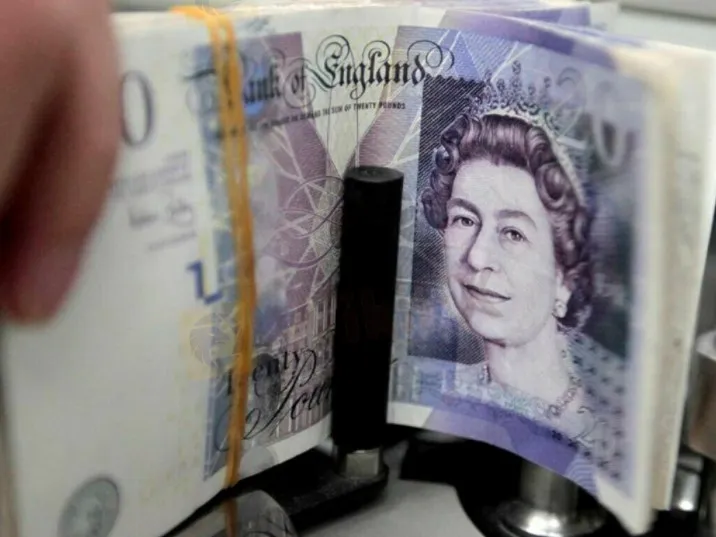简体中文
繁體中文
English
Pусский
日本語
ภาษาไทย
Tiếng Việt
Bahasa Indonesia
Español
हिन्दी
Filippiiniläinen
Français
Deutsch
Português
Türkçe
한국어
العربية
Euro weighed down by talk of fresh Russia sanctions
Abstract:SINGAPORE: The dollar made a firm start to the week as Treasury yields rose with expectations of rapid-fire US interest rate hikes, while talk of bans on Russian gas kept the euro within sight of its 2022 lows.
The euro has been weighed down by worries about the economic damage from war in Ukraine and last bought $1.1047, not too far from last months almost two-year trough of $1.0806.
Germanys defence minister said on Sunday that the European Union must discuss banning imports of Russian gas, which could drag further on growth and the currency, after Ukrainian and European officials accused Russian forces of atrocities.
Ukraine accused Russian forces of carrying out a “massacre” in the town of Bucha, which was denied by Russias defence ministry.
“Negative news on the war or a further lift in energy prices could see EUR/USD test $1.0800,” Commonwealth Bank of Australia analysts said in a note.
“However, an improvement in sentiment or a weak dollar following the (Fed) minutes could push EUR/USD through upside resistance around $1.1150,” they added, referring to March Fed meeting minutes due for release on Wednesday.
Elsewhere, talk of new sanctions kept the broad mood cautious in early trade, and the dollar was up a bit against the Australian and New Zealand dollars as the commodity currencies rally cools with easing export prices.
Sterling bounces off 3-month low against euro
The US dollar index was steady around 98.529.
Data on Friday also showed US unemployment hitting a two-year low of 3.6% last month, strong enough that investors bet it would strengthen the Federal Reserves resolve to tackle inflation by lifting rates sharply.
Fed funds futures have priced a near 4/5 chance of a 50 basis point hike next month and two-year yields stand at a three-year high of 2.4930%.
The yen, which steadied last week after a pummelling through March on the expectation of higher US interest rates against anchored Japanese yields, has been squeezed back below 122 per dollar and last traded at 122.33.
“The yen is not out of the woods,” said Jane Foley, a senior strategist at Rabobank in London.
Another prolonged bout of severe selling pressure on the yen could put pressure on the Bank of Japan to re-think its (policy).
We forecast further upside for dollar/yen towards the 125 level in the latter half of the year.
The Australian dollar last bought $0.7495 and was steady ahead of a central bank meeting on Tuesday and the kiwi dipped to $0.6905.
Sterling hovered at $1.3155.

Disclaimer:
The views in this article only represent the author's personal views, and do not constitute investment advice on this platform. This platform does not guarantee the accuracy, completeness and timeliness of the information in the article, and will not be liable for any loss caused by the use of or reliance on the information in the article.
Read more

The Yuan’s Struggle: How China Plans to Protect Its Economy
China introduced new measures on Monday to support its weakening currency, the yuan, amidst mounting economic and political pressures. The government announced plans to boost foreign exchange reserves in Hong Kong and ease borrowing restrictions for companies to improve capital flows.

Bursa Malaysia Dips as Investors Brace for 2025 Uncertainty
Bursa Malaysia saw a slight dip on the final trading day of the year as profit-taking and cautious sentiment dominated. The FBM KLCI declined 3.4 points to 1,634.28, with muted turnover of RM822.07 million due to year-end festivities. Blue-chip stocks, including Tenaga Nasional and Telekom Malaysia, experienced declines, while regional markets remained subdued amid global uncertainties. As 2024 approaches, investors remain cautious, balancing risks with potential opportunities.

Currency Fluctuations: What It Means When a Country's Currency Rises or Falls
When a country’s currency appreciates or depreciates in value, it reflects the underlying shifts in its economy and global market dynamics. For forex traders, understanding what drives these fluctuations—and how to strategically prepare for them—can make the difference between profit and loss in an ever-volatile market.

Yuan Volatility Surges as US Election Approaches
As US elections near, yuan volatility surges. Traders brace for tariff risks and market swings, preparing for potential economic shifts under Trump or Harris policies.
WikiFX Broker
Latest News
Wolf Capital Exposed: The $9.4M Crypto Ponzi Scheme that Lured Thousands with False Promises
Confirmed! US December non-farm payroll exceeded expectations
Spain plans 100% tax for homes bought by non-EU residents
90 Days, Rs.1800 Cr. Saved! MHA Reveals
The Yuan’s Struggle: How China Plans to Protect Its Economy
LiteForex Celebrates Its 20th Anniversary with a $1,000,000 Challenge
400 Foreign Nationals Arrested in Crypto Scam Raid in Manila
Singapore Blocks Polymarket Access, Following U.S. and France
OneZero Collaborates with Ladies Professional Golf Association (LPGA)
Housewives Scammed of Over RM1 Million in Gold Investment Fraud
Currency Calculator






